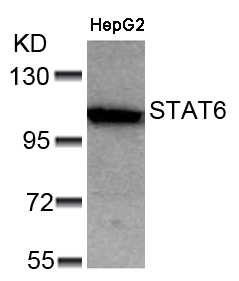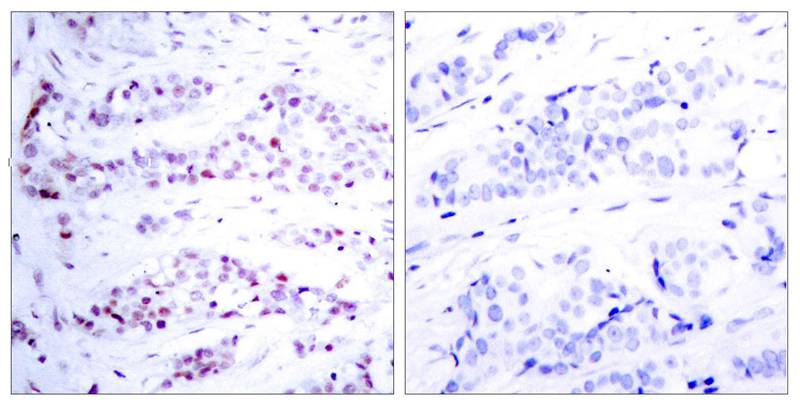STAT6 is a member of the STAT family of transcription factors. In response to cytokines and growth factors, STAT family members are phosphorylated by the receptor-associated kinases, and then form homo- or heterodimers that translocate to the cell nucleus where they act as transcription activators. By screening an embryonic lung fibroblast cDNA library with a wildtype STAT6 probe, 2 variant cDNAs were identified, which were termed STAT6B and STAT6C, encoding an N-terminal 110-amino acid truncation and a 27-amino acid deletion in the SH2 domain, respectively. All the three variants are ubiquitously expressed with STAT6B expression greatest in spleen and STAT6C expression greatest in lung. STAT6B resembles an attenuated STAT6, but that STAT6C inhibits IL-4-mediated mitogenesis and cell surface antigen expression, and is not tyrosine phosphorylated
Nelms K, et al. (1999) Annu Rev Immunol. 17:701-738.
Malabarba M G, et al. (1996) Biochem. J. 319:865-872.
Hou J, et al. (1994) Science. 265:1701-1706.
Quelle F W, et al. (1995) Mol Cell Biol. 15: 3336-3343.
Takeda K, et al. (1996) Nature. 380: 627-630.


